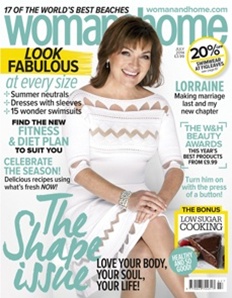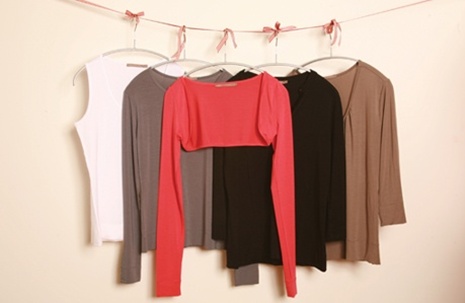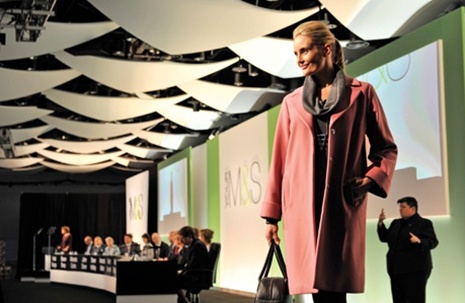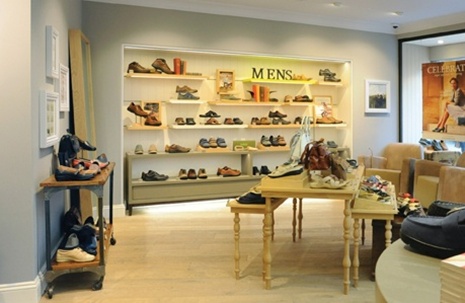Targeting the baby boomers
Research reveals that those aged 50 and over feel excluded by brands and misrepresented in advertising and with stats showing that a third of the population are 50 plus, is this a missed opportunity for brands?
As the youngest of the ‘baby boomer’ generation reach 50 this year, new research seen exclusively by Marketing Week reveals that this age group feels excluded by brands and misrepresented in advertising.
Data from the Office of National Statistics shows that there are 22 million people aged 50 and over in the UK, approximately a third of the total population, so are brands missing out on market share by ignoring the baby boomers?
A study commissioned by High50 – a global community and website for people over the age of 50 edited by former i and London Live editorial head Stefano Hatfield – suggests they are. It reveals that only 4 per cent of people in this age group feel advertising is aimed at them.
The survey of 1,305 people, conducted by Research Now, also finds that only 11 per cent feel brands are interested in them, while one person in five feels completely excluded by marketing.
“The 50-plus generation is at best ignored and at worst patronised, which, given that by the year 2020 half of the UK population will be 50-plus, is both bizarre and unacceptable,” says journalist, TV presenter and High50 ambassador Mariella Frostrup.

IPC media warns against believing the myths that over-50s are brand loyal and stuck in their ways
IPC Media, which owns brands such as Woman, Country Life and Homes & Gardens, believes that marketers are wrong to prioritise 25- to 35-year-old consumers because they are not as affluent as older consumers.
Director of insight at the publishing company, Amanda Wigginton, says: “Every brand needs to pay more attention: we are talking to older consumers day in, day out and it is really about getting to know them, not patronising or pigeon holing them. That is where so many brands make mistakes and people can see through it.”
Wigginton adds: “There are a lot of myths about this audience – that they are stuck in their ways and they are brand-loyal, when actually they are open to opportunities because they have the disposable income and are at a point in their life when a lot of things change for them.”
Change is the driver for womenswear brand Sotto e Sopra, which, according to its website, appeals to “grown-up” women. The designs are based on consumer needs and insight from the consumers themselves.
The brand’s ‘luxury basics’ clothing range is also designed for women experiencing menopause or suffering from other medical conditions that affect the body’s natural temperature. Its clothes use Tencel, a material that absorbs body moisture and releases it into the atmosphere.
Danielle Watson, UK and Europe business development manager at Sotto e Sopra, believes that there are not enough brands targeting the over-50s market and that the group is ignored, particularly when advertising clothes. Even ranges that are designed for older people often fail to acknowledge this in their marketing, she complains.
“It doesn’t help when the market, even if you get a luxury designer, is still making the products on girls. There are no real women and the models wearing the clothes are also in their 20s, so there is a contradiction.”

Sotto e Sopra says women over 50 are largely ignored in fashion advertising - even by those brands targeting older consumers
High50’s research also shows that despite negative feelings towards advertising, people have the opposite feelings towards their age – 71 per cent of 50- to 59-year-olds feel positive about it, rising to 78 per cent for 60- to 64-year-olds.
Its study also finds that almost half the respondents are feeling positive about having more time to do the things they enjoy and 44 per cent feel positive about knowing what they want.
“This reveals a remarkable disconnect between how people aged 50-plus feel about their age, their desire to enjoy life and their continuing control of family spending power, versus the advertising and marketing communities’ apparent lack of interest in talking to them,” says James Burrows, chief executive at High50.
Burrows adds: “The 50-plus generation is our most economically powerful. It’s time we threw out our old notions of 50-plus being in some sort of crisis and instead acknowledge that, for many, becoming 50 is the start of the better half of their lives.”
Representation of age
Asking someone’s age and representing age in marketing is tricky territory, but insight from a second study by Research Now reveals how the over-50s feel about their age and how old the representation of their generation in advertising makes them feel.
Of the 1,200 baby boomers in the study, 59 per cent feel younger than they are, with 23 per cent feeling five years younger, 27 per cent 10 years younger and 9 per cent 20 years younger. According to the study, the older you are the younger you feel with 67 per cent of over-65s feeling younger than they are.
However, this is not translating into advertising for this generation as 17 per cent of baby boomers feel stereotyped by the presentation of 50- to 70-year-olds in advertising, 13 per cent say they are made to feel old by it, and 11 per cent feel the representation is inaccurate.
A quarter of baby boomers feel the representation of 50- to 70-year-olds is appropriate, and one in five feel it is fair.
The 50-plus generation is economically powerful. It’s time we acknowledge that for many, being 50 is the start of the better half of their lives
Frostrup says: “The demographics and therefore the economics are all moving towards an ageing population. It’s not just that, it’s an active, and actively consuming generation. However, you need to look at the make-up of the advertising and media industries to see where the problem lies.”
Shoe retailer Hotter, which caters for the 50-plus market, believes that a shift is under way in advertising (see case study, below[1]). Chief executive Peter Taylor says: “Certain brands and industries are going to recognise and have recognised this generation is coming through.”
He adds: “Advertising has moved on. There is specific advertising at this segment where you can see models aged from 50 to 70. It’s more about people’s perceptions and that actually the mature age group do look stylish and therefore it has become far more acceptable to see them in advertising.”

Marks & Spencer and John Lewis top brand rankings for over-50s
With the worldwide web celebrating its 25th birthday this year, people in their early 50s could have spent most of their working lives seeing the internet develop. High50’s research suggests that a majority of this generation are comfortable with the internet.
However, the study also suggests there is a prejudicial view that older people do not enjoy technology. The research shows that only 2 per cent of the over-50s hate using technology and 78 per cent actively enjoy using it, a figure that stays constant from age 50 to the mid-60s.
Frostrup says: “There is a patronising attitude, especially in the area of technology, of ‘Oh, wow, you can use a smartphone to tweet?’ It is as if we are an alien species. Never mind that 50-plus people such as Tim Berners-Lee, Bill Gates and the late Steve Jobs created much of the technology we use.”
Research Now’s study reveals that 45 per cent of baby boomers find out about new products through the media, and 28 per cent through their peers or partner. But targeting marketing messages through technology could be a successful tactic for brands.
In terms of social media, while there are reports that the younger generation are moving away from Facebook, it is the social site of choice for the over-50s. Another study by iProspect finds that more than half of people in the UK aged over 70 are on Facebook and that figure rises to 62 per cent for those aged 60 to 69 and 68 per cent for 50- to 59-year-olds.
The study also shows that Twitter usage is as low as 10 per cent for over-50s. However, Friends Reunited shows a slight lift for the over-50 categories, with around one in five using it compared to 13 per cent of 30- to 39-year-olds.
Multichannel
Retail consultancy Pragma, a St Ives Group company, took a deeper dive into how this market shops, exploding the stereotype that older consumers prefer to shop in-store. Of 1,308 respondents, 76 per cent shop and browse the high street and 73 per cent do the same online – 12 per cent online via a tablet or mobile.
“On eBay, the over-50s represent a big share of wallet, so advertisers should be prioritising this age group,” says Phuong Nguyen, director of eBay Advertising in the UK.
“Online, advertisers don’t need to have a one-size-fits-all approach to campaigns, risking alienation of some of their customers – it’s easy to target different groups with different messaging simultaneously, so it should be a no-brainer,” he adds.
For example, on eBay in the UK, men aged 50 to 59 conducted 140 per cent more searches for ski accessories than men aged 18 to 29 between January and May last year.
Online advertisers don’t need to have a one-size-fits-all approach to campaigns - it’s easy to target different groups with different messaging simultaneously
Phuong adds: “It seems that a lot of brands don’t realise how wide they could be spreading the net but the beauty of digital marketing is that brands can target consumers by their passions and interests, rather than their age, ensuring that they don’t miss out on important customers.”
Pragma’s research also shows what brands need to deliver in-store and online to cater for older consumers effectively. For in-store shopping 60 per cent would like to see an increase in the number of staff on tills, 47 per cent want an increase in staffed till points, 37 per cent a welcoming atmosphere, and 26 per cent would like special deals and offers.
Regarding online shopping, the iProspect study claims there is no age-based digital divide. It finds virtually no difference in attitudes between consumers aged 30 and those over 70.
Three-quarters of all respondents see online shopping as more convenient and around two-thirds are comfortable with online stores’ data security provisions. Similarly, across all ages nearly 60 per cent of consumers regularly purchase goods online.
One age-dependent trend is towards ‘reverse showrooming’, where people research online and buy in-store. This is more common among the 50 to 59 age group (see Over-50s segmentation, page 14[2]).
Taylor at Hotter says: “You can’t force a customer to buy through a particular channel: they will decide what is right at that moment in time. It’s about making it seamless and making the brand experience similar across all channels.”
Brand heroes
Even so, it is difficult to pinpoint well-known brands that are targeting the valuable over-50 age group specifically and successfully.
High50’s study explores which brands from the YouGov Brand Buzz Index perform well in the over-50s market. Marks & Spencer[3] and John Lewis[4] top the leader board, while YouTube does not rate highly. Brands such as Amazon, Dyson, Volkswagen and Apple[5] also seem to be failing to engage.
In the Pragma analysis, John Lewis comes out as a clear winner, as respondents say the retailer caters well for the 50-plus market, has clear brand values, exemplary staff and service, seamless cross-channel experience, a loyalty scheme, a café offer, ease of shopping experience and a balance of consistency and innovation. Each attribute could be one to emulate for brands that are still not sure how to engage with baby boomers.
IPC’s Wigginton says: “My advice to brands would be to talk to this age group, spend some time with them. Brands need to acknowledge what the data and insight is telling them. This is not going to go away, the 50-plus generation are a force to be reckoned with.”
Segmenting the over-50s
Research from iProspect shows that the over-50s can be divided into three groups relating to their shopping behaviour and use of technology.
- Adventurous adopters: Reach me by smartphone. Send email offers. I love streaming services. I browse online but shop in-store.
The group includes 50- to 59-year-olds. The study shows they are keen on online video subscription. Smartphone uptake is also strong, but they don’t look for promotional offers on mobile, preferring email instead. This group consists of the most active shoppers of the three categories and demonstrates a trend of ‘reverse-showrooming’ – researching online and buying in-store.
- Confident adopters: Avid YouTuber. I love iPlayer. I want to browse and buy online. Reach me anywhere but smartphones.
The 60- to 69-year-old group is active on all channels except smartphone. They stand out for frequency of video consumption – they are the highest users of YouTube and BBC iPlayer out of the three categories. They also show a lift, compared to the other two groups, for researching and buying online. Of all the age groups from 30 upwards, this category is most likely to research and buy online.
- Comfort adopters: Find me on tablets and smart TVs. I use pre-installed apps. I don’t have a laptop. Let me shop in-store.
This group includes men and women aged 70 and over and is the top over-50 category for consuming video on tablets and smart TV. They are less likely to own a laptop as they mix desktop surfing with a tablet or ereader. The group watches video online, but they tend to use well-known providers, mostly through pre-installed apps. In terms of shopping behaviour the group is more likely to see the value of physically visiting a store to see goods.
Case study: Hotter

Show retailer Hotter specifically targets the 50-plus market
Hotter is a shoe manufacturer and retailer for the over-50s. It has an active customer base of almost 1 million consumers in the UK and over 90,000 in the US, and has 65 stores.
The company is aware of this expanding demographic in the UK and forecasts 13 per cent growth of the over-50s market over the next 10 years.
Chief executive Peter Taylor says: “When we reach 50 our body shape starts to change, including our feet, and comfort starts to override the more glamorous aspects of footwear. There are not many brands that focus on this segment, so it’s a good market to do something specific.”
Customer service is a high priority for the multichannel business. Taylor says: “Businesses can have an old-fashioned view of what this market segment is like. Our call centre staff do not work off scripts and they spend the right amount of time for each customer. They don’t patronise customers.”
The company ensures it has a positive portrayal of the over-50s through imagery and language used in marketing communications. Hotter also gives consumers a choice of how they want to buy, whether it is online, in-store or via mail order.
Taylor adds: “Comfort for us is not just about the product but the whole environment and service proposition. We have a substantial online business, and it’s more about people’s exposure to using the internet – age is secondary. It is recognising that customers, regardless of age, will decide what channels they want to buy through.”
Stats
By the year 2020, more than 50% of the UK’s population will be over the age of 50
People over 50 control 89% of all disposable wealth in the UK
Women over 50 account for 68% of cosmetics purchases per year
People over 50 account for more than 70% of the luxury travel market
Someone turns 50 every 40 seconds in the UK
Source: High50
References
- ^ see case study, below (www.marketingweek.co.uk)
- ^ see Over-50s segmentation, page 14 (www.marketingweek.co.uk)
- ^ Marks & Spencer (www.marketingweek.co.uk)
- ^ John Lewis (www.marketingweek.co.uk)
- ^ Apple (www.marketingweek.co.uk)









